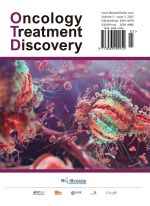Abstract
Objective: To evaluate global research trends and outputs on the ultrasound diagnosis of thyroid nodules using bibliometric analysis. Methods: The study searched the Web of Science Core Collection for publications on thyroid nodule ultrasound diagnosis (2000–2025). Relevant literature data (publication year, countries, institutions, authors, journals, keywords, and citations) were extracted. Bibliometric analyses were performed using VOSviewer to map collaboration networks, research hotspots, and co-citation patterns. Results: A total of over 8,000 publications were included. Annual output rose from 25 in 2000 to 390 in 2022. The United States and China together contributed more than one-third, with the U.S. leading by citations and China showing rapid growth. Leading institutions were concentrated in East Asia and North America, especially Korea and China. Author networks revealed strong collaboration among Korean radiologists. The thyroid was the most productive and most-cited journal. Keyword co-occurrence clustered around ultrasound risk stratification, FNA cytology and molecular testing, and management strategies. Co-citation analysis highlighted guidelines, particularly the 2015 ATA statement, as central to the knowledge network. Conclusion: Research on ultrasound diagnosis of thyroid nodules has expanded rapidly over the past two decades, with Asia and North America at the forefront. Collaboration networks reveal regional clusters and prolific contributor groups. The literature emphasizes differentiating benign from malignant nodules via standardized ultrasound risk stratification and adjunct FNA, while emerging trends include the integration of advanced imaging techniques, artificial intelligence, and nonsurgical therapies. These bibliometric insights map the evolution of this field and can guide future research and international collaboration.
References
Tessler F, Middleton W, Grant E, et al., 2017, ACR Thyroid Imaging, Reporting and Data System (TI-RADS): White Paper of the ACR TI-RADS Committee. J Am Coll Radiol, 14(5): 587–595.
Chou R, Dana T, Haymart M, et al., 2022, Active Surveillance Versus Thyroid Surgery for Differentiated Thyroid Cancer: A Systematic Review. Thyroid, 32(4): 351–367.
Qi Q, Huang X, Zhang Y, et al., 2023, Ultrasound Image-Based Deep Learning to Assist in Diagnosing Gross Extrathyroidal Extension Thyroid Cancer: A Retrospective Multicenter Study. EClinicalMedicine, 58: 101905.
Ali S, Baloch Z, Cochand-Priollet B, et al., 2023, The 2023 Bethesda System for Reporting Thyroid Cytopathology. Thyroid, 33(9): 1039–1044.
Piticchio T, Russ G, Radzina M, et al., 2024, Head-to-Head Comparison of American, European, and Asian TIRADSs in Thyroid Nodule Assessment: Systematic Review and Meta-Analysis. Eur Thyroid J, 13(2): e230242.
Orloff L, Noel J, Stack B, et al., 2022, Radiofrequency Ablation and Related Ultrasound-Guided Ablation Technologies for Treatment of Benign and Malignant Thyroid Disease: An International Multidisciplinary Consensus Statement of the American Head and Neck Society Endocrine Surgery Section with the Asia Pacific Society of Thyroid Surgery, Associazione Medici Endocrinologi, British Association of Endocrine and Thyroid Surgeons, European Thyroid Association, Italian Society of Endocrine Surgery Units, Korean Society of Thyroid Radiology, Latin American Thyroid Society, and Thyroid Nodules Therapies Association. Head Neck, 44(3): 633–660.
Lui M, Patel K, 2024, Current Guidelines for the Application of Radiofrequency Ablation for Thyroid Nodules: A Narrative Review. Gland Surg, 13(1): 59–69.
Kim M, Moon J, Lee E, et al., 2024, Active Surveillance for Low-Risk Thyroid Cancers: A Review of Current Practice Guidelines. Endocrinol Metab (Seoul), 39(1): 47–60.
Bychkov A, Jung C, 2024, What’s New in Thyroid Pathology 2024: Updates from the New WHO Classification and Bethesda System. J Pathol Transl Med, 58(2): 98–101.
